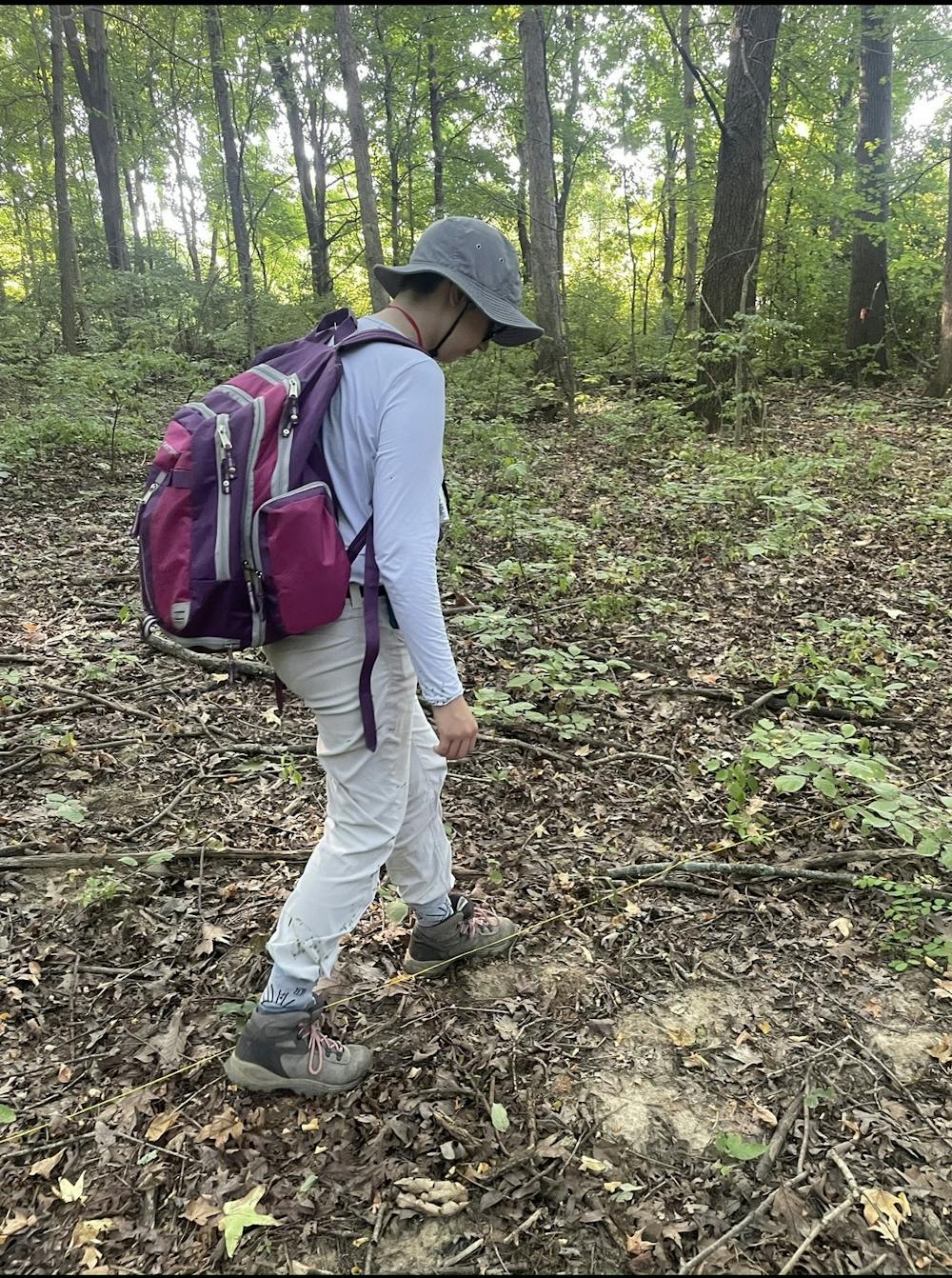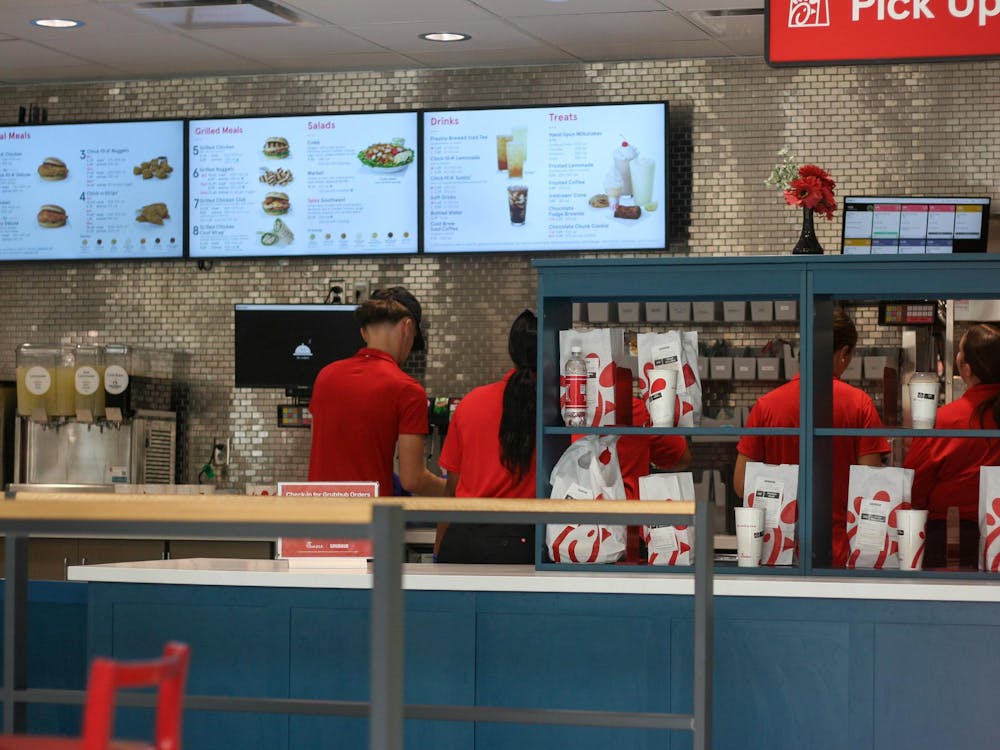Biology graduate student Gabriel Inoshita spends two and a half weeks a year in the fall camping in the desert of New Mexico.
Here, he begins his mornings at 6:30 a.m. cooking breakfast on a gas stove and lugging research equipment through thorny terrain to his research site. His evenings are mostly spent chatting with colleagues, as poor service prevents cell phone use.
At the end of the trip, the work is far from over. Some days, Inoshita spends eight to 10 hours staring at his collected data while formatting and finding connections. All of this work aims to help government agencies better sample and protect the endangered Texas Hornshell mussel – and will earn Inoshita his master’s degree in December.
David Berg – a professor of biology overseeing the project – describes the next steps as “data wrangling.” Inoshita is working towards creating a model that can be fed smaller amounts of data, ensuring that sampling is accurate and cost-effective for conservationists.
Berg has been assisting students in research projects since he began his faculty position in 1993. He says that the fieldwork done in New Mexico has contributed to a body of data over 20 years old, which has been used in three doctoral dissertations along with Inoshita’s master’s thesis.
The work involves transect surveying – setting up a line across a river and searching it to see how many mussels are present. The mussels are captured and marked in September – when it is safest to remove them from the water – in order to understand how many are dying, and how much they are growing.
Berg says the continued study on these mussels has given undergraduates opportunities to assist, as the work can be labor intensive. According to Berg, the many undergraduate research opportunities available to Miami University students would not be possible without a thriving body of master’s and doctoral degree students.
“I’m not sure that our administration often realizes this – that it’s absolutely critical that the graduate students be here – because they are what allow us to offer research opportunities to hundreds of undergraduates,” he said. “Well, that can only happen when we have master’s and Ph.D. students.”
Graduate botany student Haley Weber said her undergraduate research experiences at Drew University were valuable, and she is now working towards her master’s degree at Miami.
“It’s definitely important, if you know this is a path you want to go on, to get those experiences early on,” she said.
She became interested in invasive plants after taking a field botany class in her undergraduate studies. This piqued her interest in Miami biology professor David Gorchov’s lab which studies the impacts of deer and invasive plants.
For her thesis, she is studying how whitetail deer eating habits impact the dispersal of invasive Callery pear plants in forests. Continuing into next summer, she will evaluate whether deer are damaging Callery pear leaves, with the end goal of the project being to contribute to better species management.
Enjoy what you're reading?
Signup for our newsletter
“Invasive species threaten native biodiversity,” Weber said. “So it’s really important to understand how they are spreading, what’s impacting their spread.”
Part of this process is measuring the growth of protected versus unprotected seedlings to see if deer are lessening the growth of the unprotected by eating them. At the end of her research, she will cut all the seedlings down and compare the above-ground biomass – the total weight of an organism in an area – to understand how deer are impacting Callery pear growth.
In the coming week, she will be collecting deer fecal pellets and attempting to germinate the seeds within to assess whether or not the deer can spread Callery pear seeds through their eating habits.
Weber enjoys working on something she is passionate about and spending time in nature. She’s leading her own project for the first time and hopes the new skills she’s learning will lead to doctoral degree research and work as a professor one day.
Inoshita also says his research experiences have led him to resources and skills he otherwise would not have found. These include GIS or mapping skills and using the RedHawk Cluster, Miami’s supercomputer, to simulate models.
“The amount of work you’re able to get done because of the resources the school has is crazy, and it’s really nice,” Inoshita said.
He says his master's degree will allow him to work in his desired field of conservation. However, he believes the graduate student experience could be improved by more funding. Inoshita says that although the school is great at providing them with everything they need for their research, personal expenses are difficult – especially with recent discussions he has heard of funding cuts for doctoral degree students.
“It’s gonna be a big problem for recruiting new students – that’s for sure,” Inoshita said.
Berg also has concerns about potential cuts in graduate student funding. He says working with graduate students is probably the best part of his job, and that they play a critical role at Miami.
“They’re also absolutely critical to the research mission, especially when we try to tie the research mission to the undergraduate experience,” Berg said.
Both Inoshita and Weber encourage undergraduates to seek out research experiences – to reach out to professors who are doing interesting projects and take advantage of the opportunities on campus.




